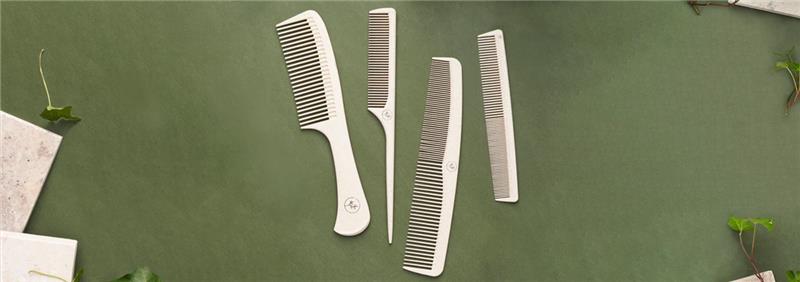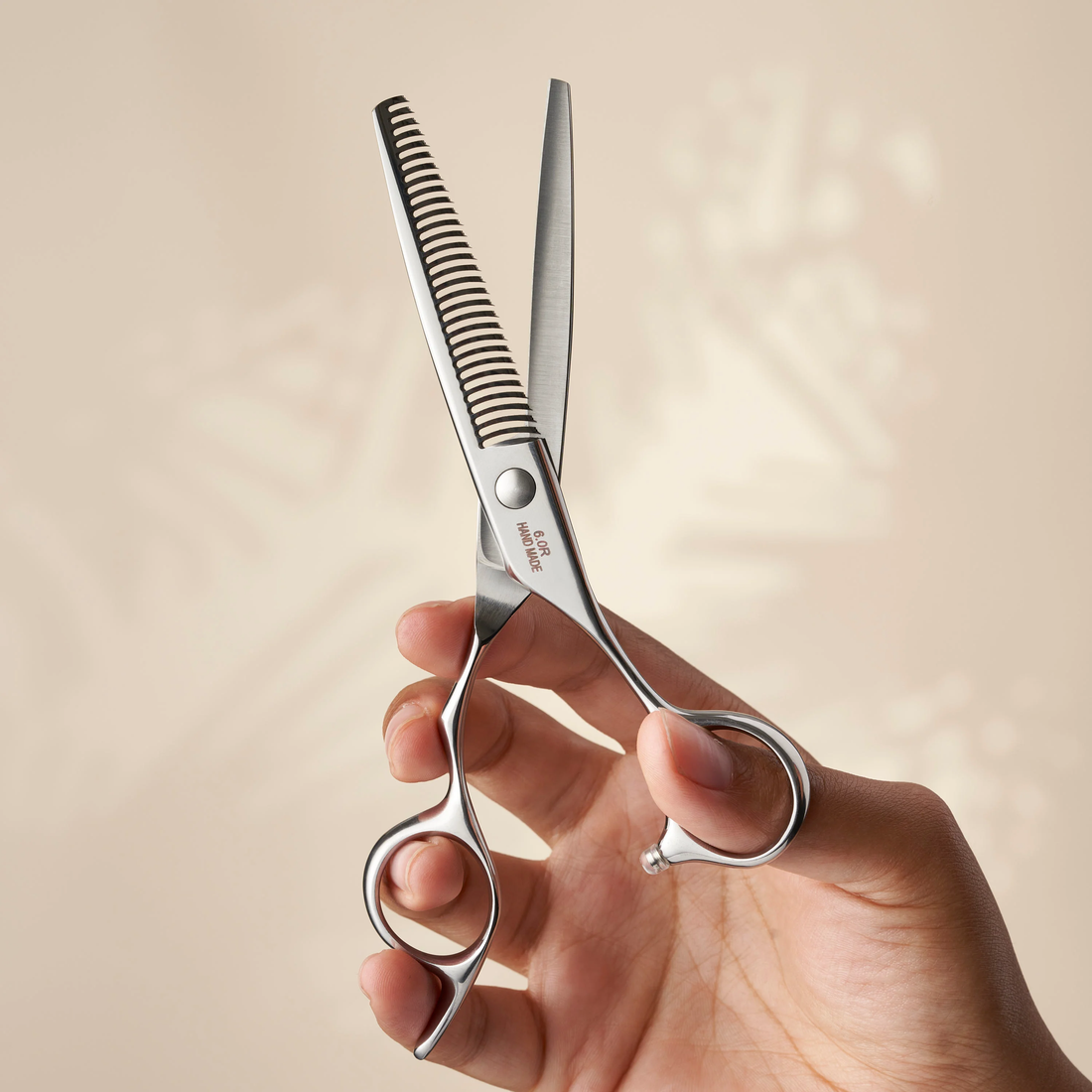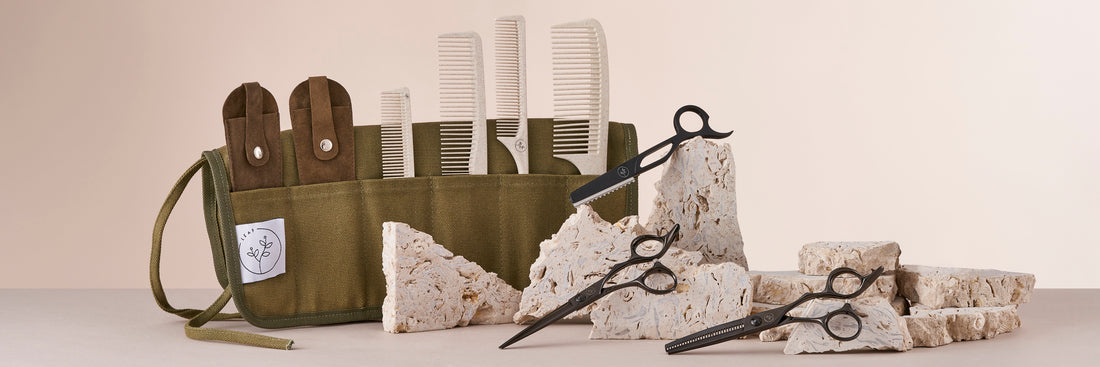Day to day, we use combs to comb our hair, to untangle knots and to remove dirt and dust; and in hairdressing we use them to make perfect sections, to apply dyes, to control a hairstyle and to control straight lines during the cut. But what are the different types of combs and what are there uses?
Types of hairdressing combs and their uses
There are multiple combs that are used for different purposes. In this blog we'll talk about four types of hairdressing and barber combs that you will typically come across, and we will help you to define clearly what they are used for:
Pin Tail Comb
The Pin Tail Comb is your go-to tool for precise colouring and sectioning. With a textured pin that keeps foils firmly in place, it’s perfect for detailed work. Made from durable, anti-static ceramic, it glides smoothly through hair and can handle heat up to 280°C. The white finish makes it easy to see every section—no matter the hair colour. Plus, one tree is planted for every comb sold.
Detangling comb
These are combs that, as their name suggests, help hairdressers to detangle the hair by exerting a certain type of pressure on them. It is important to make sure that they are not made of plastic because friction is generated which causes the hair to become electrified.

Tail Comb
Tail combs have a great feature, it's elongated handle. These combs help to straighten the hair when the hairdresser is doing a colour technician job. On one side, it pulls out the strands to make highlights and with the handle it smooths the area.

Cutting combs
These combs, as the name suggests, help the hairdresser when cutting hair. The comb is divided into two parts, one half with tines that hold the hair closer together to cut it and the other half helps to untangle the hair, which is why the distance between the tines is so small.
Leaf has created a biodegradable comb made from PLA and Wheat straw. As a sustainable alternative to plastic combs. You can access these tools through this link.
At Leaf Scissors we design hairdressing tools for hairdressers while being conscious of environmental sustainability.







